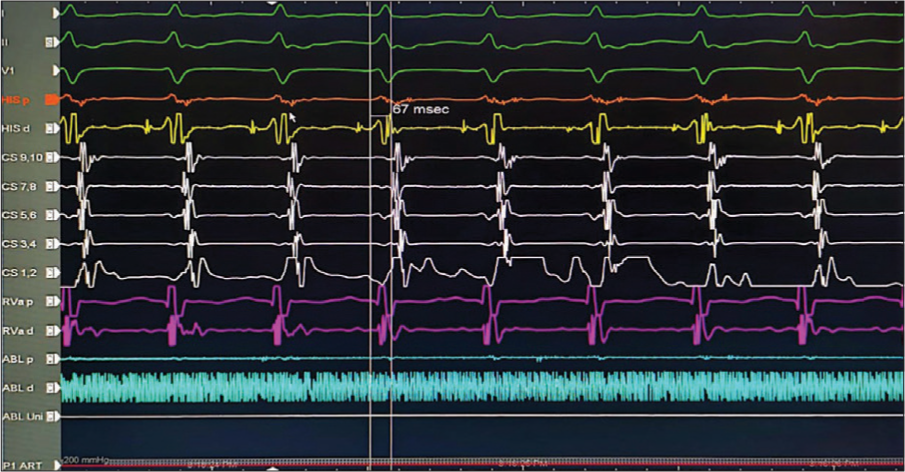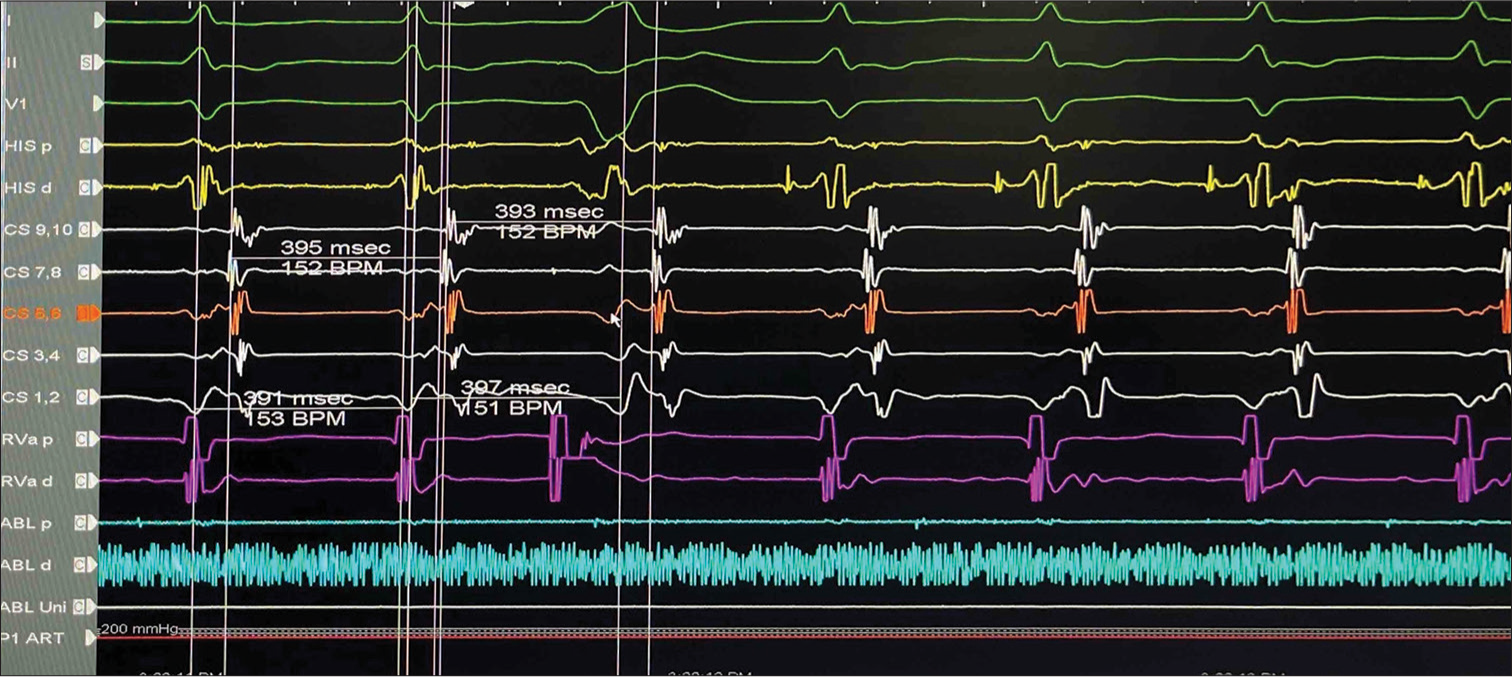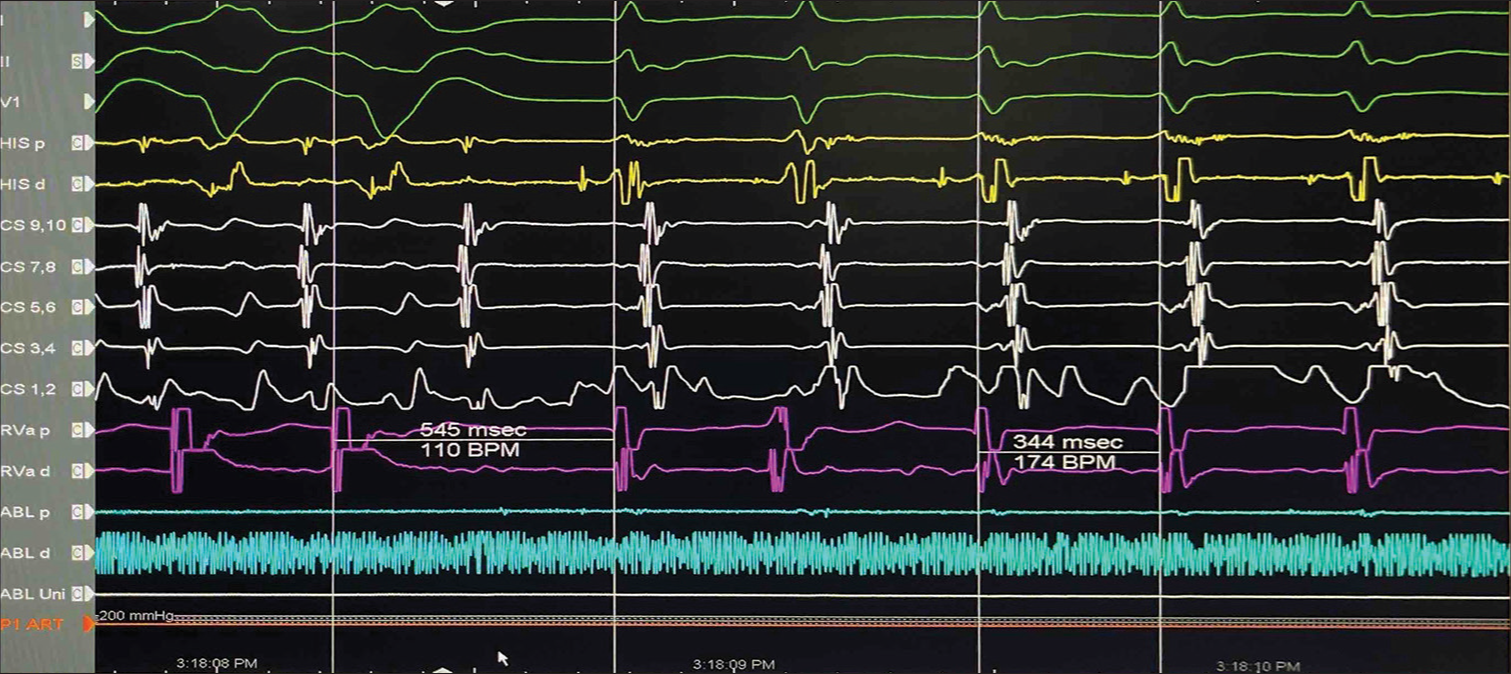Translate this page into:
Revisiting Supraventricular Tachycardia Maneuvers: A Pictorial Brief for the Budding Electrophysiologists
*Corresponding author: Atul Kaushik, Department of Cardiology, Fortis Escorts Heart Institute, New Delhi, India. dratulkaushik0126@gmail.com
-
Received: ,
Accepted: ,
How to cite this article: Kaushik A, Jaswal A. Revisiting Supraventricular Tachycardia Maneuvers: A Pictorial Brief for the Budding Electrophysiologists. Indian J Cardiovasc Dis Women. 2024;9:249-50. doi: 10.25259/IJCDW_27_2024
A 65-year-old male known case of paroxysmal supraventricular tachycardia and left ventricular ejection fraction 55% presented with increased episodes of palpitations for 2 weeks in the emergency department. His electrocardiogram (ECG) revealed supraventricular tachycardia (SVT) at ventricular rate of 138/min, as shown in Figure 1. He was planned for electrophysiological study (EP) and radiofrequency ablation with 2-D mapping. The ECG gave a clue to the underlying mechanism of the tachycardia.

- 12 lead Electrocardiogram of the patient showing a narrow complex tachycardia with short RP interval. The ventricular premature complex as marked by an arrow in leads V1-V3 shows that tachycardia cycle length is unaffected by it giving a clue to the mechanism of tachycardia could be atrioventricular nodal reentry tachycardia.
EP study revealed the mechanism to be atrioventricular nodal reentry tachycardia (AVNRT). [Figures 2-4] depict the various SVT maneuvers to establish the diagnosis of AVNRT. Radiofrequency modification of the slow pathway was done. Procedure was completed without any complication and he was discharged the next day.

- Tachycardia induction in the electrophysiological laboratory: Septal ventriculoatrial <70 ms is suggestive of typical atrioventricular nodal reentry tachycardia.

- His synchronous premature ventricular contraction (PVC): The His synchronous PVC failed to reset the tachycardia as the tachycardia cycle length in the atrial electrogram is unchanged. Atrioventricular reentry tachycardia is less likely to be the mechanism.

- Entrainment during tachycardia: On cessation of ventricular pacing, the post-pacing interval minus tachycardia cycle length was 201 ms which is higher than 115 ms. This goes in favor of atrioventricular nodal reentry tachycardia (AVNRT). Further, the delta ventriculoatrial during V pacing and during tachycardia are more than 85 msec, favoring the mechanism to be AVNRT. Repetitive Entrainment episodes via V pacing during the Tachycardia documented VA linking, thus make sAT unlikely.
Ethical approval
Institutional Review Board approval is not required.
Declaration of patient consent
The authors certify that they have obtained all appropriate patient consent.
Conflicts of interest
There are no conflicts of interest.
Use of artificial intelligence (AI)-assisted technology for manuscript preparation
The authors confirm that there was no use of artificial intelligence (AI)-assisted technology for assisting in the writing or editing of the manuscript and no images were manipulated using AI.
Financial support and sponsorship
Nil.






